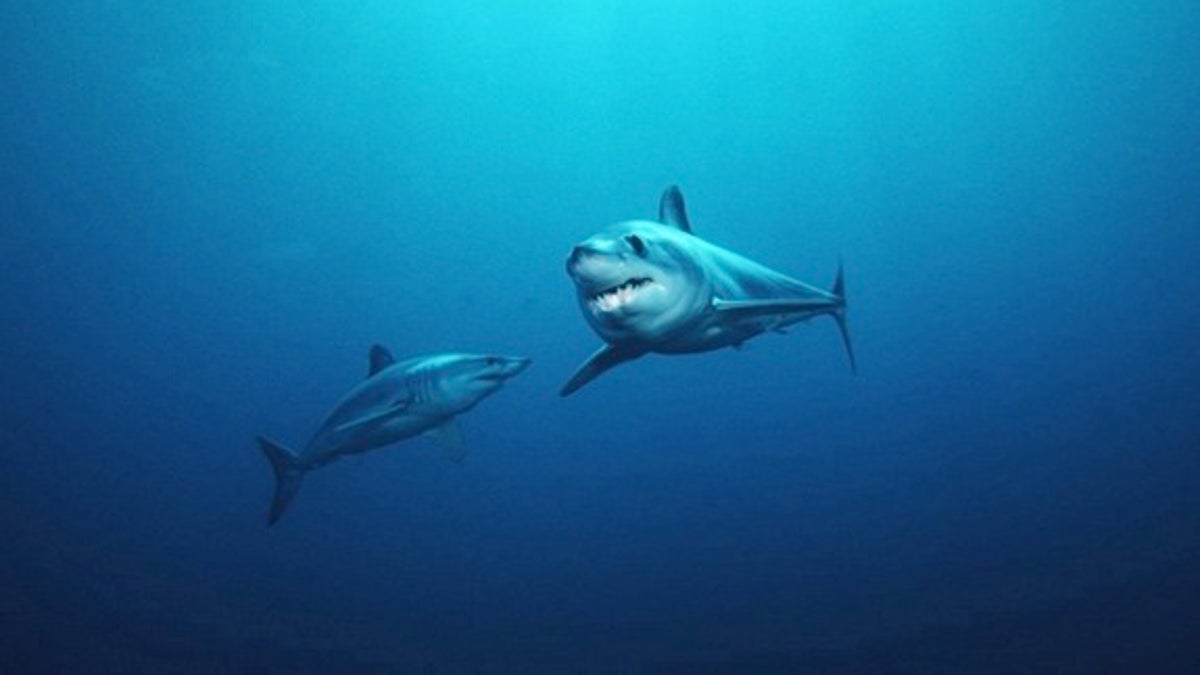
Two shortfin mako sharks, which are fast-moving and streamlined fish. They propel themselves through the water with short strokes of their thick, powerful tails. (Southwest Fisheries Science Center, NOAA Fisheries Service)
What do mako sharks eat? To find out, you have to look inside their stomachs.
Shark scientist Antonella Preti recently dissected the largest mako shark stomach she's ever encountered and she's seen a lot of shark stomachs. To date, Preti has dissected more than 2,000 swordfish and shark stomachs, including 200 from makos, according to a statement from the National Oceanic and Atmospheric Administration (NOAA), where Preti works.
Inside the stomach, the scientist found a sea lion that weighed about 200 pounds. The stomach also contained other bones that Preti will have to clean and identify, she said in a video detailing the stomach dissection. [Video: Huge Mako Shark Stomach Dissected]
[pullquote]
It's important to know what sharks eat because they are an important part of the food chain. As apex predators, they keep populations of midlevel predators like grouper in check and eat sick and old prey species, keeping their populations healthier; when the sharks disappear, negative changes can ripple through the food web. But as many as 100 million sharks are killed each year for their meat and their fins, which are made into shark-fin soup. This dish is prized as a delicacy in China, despite evidence that it can contain high levels of toxins like mercury. [8 Weird Facts About Sharks]
Preti told LiveScience that the weirdest things she's found in a shark stomach include "a bullet, 24 pork steaks wrapped in paper and a soggy salad."
A commercial fisherman off the coast of Southern California caught the mako shark in question, donating its organs to science. The shark weighed 1,323 pounds and was 12 feet long.
Preti and her colleague Lisa Natanson, both shark experts, answered questions via Twitter today about the animals. Find their answers @NOAAFisheries or search for entries tagged #sharkweekchat.
For the past 25 years, the Discovery Channel has hosted "Shark Week" annually. The kickoff to this year's installment stirred some controversy over a mockumentary about the extinct, ancient, giant shark, Megalodon.
Copyright 2013 LiveScience, a TechMediaNetwork company. All rights reserved. This material may not be published, broadcast, rewritten or redistributed.
